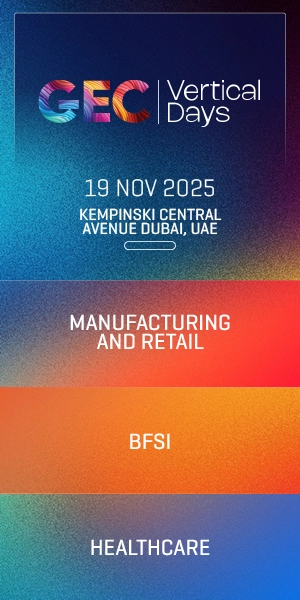The big advances in AI today come from machine learning, a field that studies how we can train a computer to perform certain tasks by using a large amount of data. Exponential increase in computing power, better machine learning models driving fine-tuned algorithms and Big Data learning are creating a growth framework for the future of AI.
As per a Forbes report on Artificial Intelligence, in 2016, the AI market was worth $644 million. In 2017, the market value of AI was expected to double and continue to grow exponentially until it reaches $38.6 billion in less than 10 years. But AI has yet to gain acceptance as real technology with practical application rather than a ‘Sci-fi’ perception that we have of it.
With a significant portion of companies just beginning their digital transformation journey, a business application such as Microsoft Dynamics 365 is more likely to be in the business realm as a solution to break down the silos between CRM and ERP. The issues of data and intelligence, and using these insights to capture new business opportunities is likely to resonate better with the business community.
However, things have dramatically changed the course of AI and the massive strides it has made in a short period of time. The big advances in AI today come from machine learning, a field that studies how we can train a computer to perform certain tasks by using a large amount of data. Exponential increase in computing power, better machine learning models driving fine-tuned algorithms and Big Data learning are creating a growth framework for the future of AI.
Real world practical applications of AI
Proximity Marketing, a direct result of Predictive analytics in my opinion, has changed the way businesses are earning revenues today and is a compelling example of how Artificial Intelligence (AI) can be practically applied. Drill down analytics are now powering the shopping experience. Retail giant Amazon took AI to create disruptive experience in the brick and mortar space with Amazon Go while AI solutions like Amazon’s Echo, Google’s Home, and Apple’s Siri are making real differences in the online shopping experience.
AI has and is continuously evolving as a practical application across industries. In the Retail Industry, it has never been more challenging to retain customer loyalty. Customized loyalty solutions such as Engage 365 innovatively leverages insights from CRM, and deliver a whole new level of personalization using Microsoft Social Engagement, Power BI and Azure.
Using artificial intelligence (AI) and machine learning (ML) Apps, websites and bots with intelligent algorithms see, hear, speak, understand and interpret user needs through natural methods of communication. Microsoft’s Power BI, for example, literally collates cross organization data to create visual reports based on drill down analytics and then enables building of reusable data models for consistent analysis. This is truly transformational for businesses today!
AI is a capability that allows a computer or machine to reason and perform tasks that typically require human intelligence. AI has clearly created disruption in many domains, areas like semantic search, natural language understanding, visual perception, and personal recommendation. Real world issues and even business problems are being solved with cognitive services such as those from Microsoft. Image-processing algorithms smartly identify, caption and moderate pictures using computer vision APIs, Face and Emotion APIs, Content Moderator etc. most of which are available through a Microsoft Azure subscription.
Mapping complex information and data in order to solve tasks such as intelligent recommendations and semantic searches are again, available on Azure for Predictive notifications of what customers need. Language understanding, text analytics, predictive web language models and even translator text for machine translation is available through Microsoft Azure
Microsoft Azure AI Stack

Source: https://azure.microsoft.com
Microsoft Azure’s AI platform brings together various components of the AI stack to create intelligent applications. One of the Azure AI service offerings is Azure Bot that integrates with Cortana, Office 365, Slack, Facebook Messenger etc. to accelerate development for conversational API. Their template driven model allows users to Build, connect, deploy, and manage intelligent bots to interact naturally with users on websites, apps and other platforms. And because it is a subscription based service, cost of ownership is significantly lower.
Clubbing the Azure Bot Service and Language Understanding service for example enables developers to create conversational interfaces for various scenarios like banking, travel, and entertainment. In a a cited uses case for the practical application of the Azure Bot Service, a hotel’s concierge can use a bot to enhance traditional e-mail and phone call interactions by validating a customer via Azure Active Directory and using Cognitive Services to better contextually process customer requests using text and voice. The Speech recognition service can be added to support voice commands.
So, organizations like Microsoft are paving the way for increased adoption of AI in business to help create efficiencies of cost and performance output.
AI on the Cloud – a symbiotic relationship
For small and medium-size companies, building AI-capable systems at scale can be prohibitively expensive, largely because training algorithms takes a lot of computing power. The likes of Amazon, Microsoft, and Google, each of which has vast stores of computing power and a big stake in the $40 billion cloud computing industry has added AI to their offerings to deliver cost-effective ways of building machine learning into their software. Microsoft and Amazon are also teaming up. The two launched an open-source deep-learning library called Gluon that is meant to make it as easy to build and train neural networks as it is to make an app. Microsoft is also trying out low-power chips to run its Azure cloud servers.
Cloud computing is already deeply integrated into several facts of online activity. The fusion of AI and cloud computing is set to be a powerful tool to accelerate change. It’s quite obvious that as AI & ML continue to make great strides, a new age of cloud computing is also eminent.




















